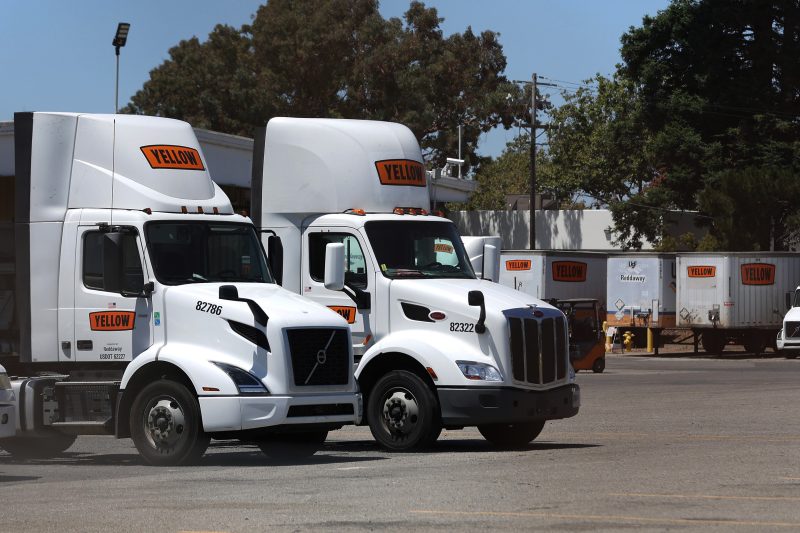The U.S. just lost as much as 15% of its small-batch trucking capacity — and consumers are likely to feel the effects in higher prices as the holiday season rolls around.
On Monday, Yellow, a 99-year-old carrier that built its business on combining multiple smaller shipments into single truckloads, filed for Chapter 11 bankruptcy protection.
The company had already halted operations on July 30, leaving 30,000 of its workers jobless.
Yellow was known for being one of the lowest-cost carriers in its sector, known as ‘less-than-truckload,’ or LTL, because it took different batches from different shippers to build full loads, as opposed to working with single businesses to fill up trucks and ship their goods exclusively.
The reasons for its failure are complex. Company officials have blamed unions, a charge that, led by the Teamsters, officials have denied. Analysts say Yellow had high debt loads and encountered trouble integrating disparate subdivisions.
How will the shipping industry be affected?
Yellow accounted for 10% to 15% of the LTL market share. And its competitors have already indicated they will not be honoring Yellow’s pricing structure as they pick up its customers, said Ken Adamo, the principal for global freight market intelligence at DAT Solutions, a freight and shipping analytics company.
That means end users — everyday shoppers who send and receive goods — may face higher pricing as the holiday season rolls around.
‘If 10% of [LTL] volume is going up 20%, that’s material,’ Adamo said, adding that some other trucking companies might also meet demand by slowing pickup schedules.
The overall U.S. supply chain has recovered substantially from pandemic-era disruptions as economic growth has slowed, countries have reopened and shoppers have shifted their spending away from goods and toward services.
As a result, the trucking industry has been in something of a recession for the better part of a year, said Rachel Premack, the editorial director of FreightWaves, a provider of global supply chain market intelligence.
‘Right now, there is plenty of capacity,’ Premack said, meaning shipping rates had come down to meet lower demand.
Adamo said the loss of a major carrier will only serve to push overall prices back up.
‘If you’re one of the remaining large LTL carriers, this is a tailwind,’ he said.







